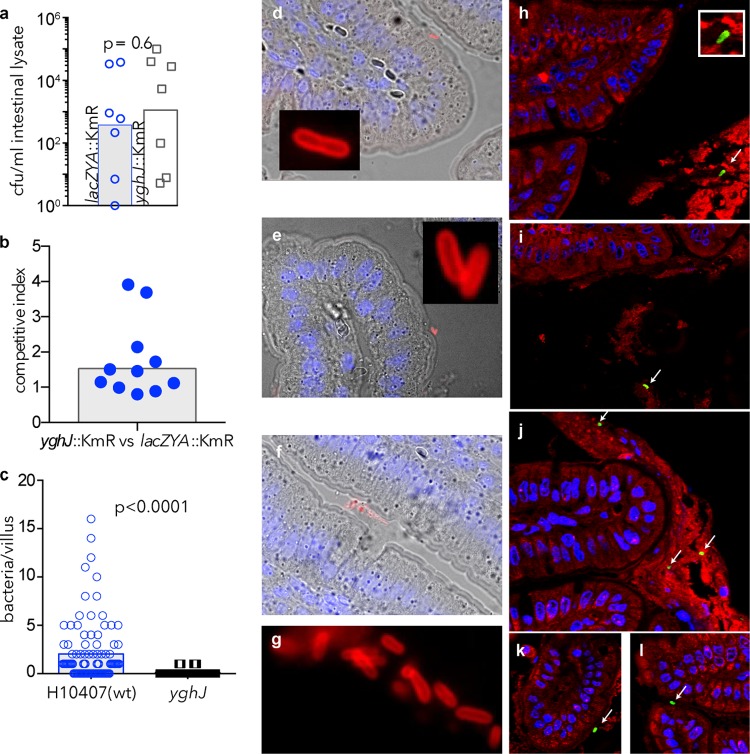FIG 2.
YghJ is required for efficient access to the surfaces of enterocytes. (a) Total ETEC recovered from intestinal lysates following infection with either the wild-type (wt) strain bearing a Kmr cassette insertion in the lacZYA locus (lacZYA::Kmr) or the yghJ::Kmr mutant. The bars show the geometric mean number of CFU/ml. Each symbol shows the value for an individual mouse. (b) Competition assay between the lacZYA mutant and the yghJ mutant showing total bacteria recovered from intestinal lysates (the bar represents the average competitive index). (c) Bacteria intimately associated with the surfaces of intestinal villi (n = 100) from intestinal segments of mice (n = 2) following challenge with either H10407 (wt) (blue open circles), or the yghJ mutant (open squares) (P values reflect two-tailed Mann-Whitney nonparametric analysis). (d to f) ETEC H10407 (serotype O78:H11) intimately associated with enterocyte surfaces of intestinal villi. Bacteria identified by anti-O78 (red) immunofluorescence imaging are shown in the insets and in panel g. (h and i) Trapping of the yghJ mutant in luminal mucus (MUC2 is shown in red; bacteria identified by anti-O78 antibodies appear green). H10407 also appears in the lumen (j), but it is also present in close association with the enterocyte surface (k and l).

